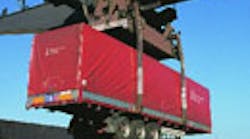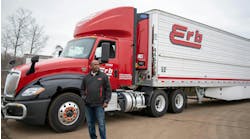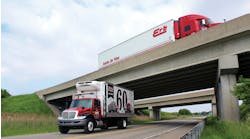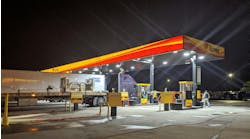Though intermodal freight volumes continue to fall, experts believe this blended truck-rail service is actually holding its own quite well amid the global economic downturn – especially in the U.S., where its prospects continue to brighten.
"By far the greatest weakness for intermodal right now is on the international side – volumes there are down 20 to 25%," said Larry Gross, president of Gross Transportation Consulting and senior consultant with FTR Consulting Group, in a recent conference call with reporters.
"But on the domestic [U.S.] side, intermodal is doing considerably better – [volumes] are down only 5% to 10%, which means it's very effectively holding share," Gross stressed. "Due to the truck overcapacity issue and lower fuel prices, we expected intermodal's share [of freight] to drop much more – but it has not."
Gross said that intermodal's best "play" is in shipments that travel 550 miles or more – and he noted the overall drop in freight movements has actually helped intermodal providers make the service more robust than in the past. "Intermodal has never been as speedy or reliable as it is now," Gross pointed out. "That's attracting more total tonnage to this mode, not just truck-specific tonnage."
Overall freight traffic on U.S. railroad lines remains way down compared to last year. For the first 20 weeks of 2009, U.S. railroads reported cumulative volume of 5,295,843 carloads, down 19.3% from 2008, according to data tracked by the Association of American Railroads. Trailer and container shipments – intermodal's bread and butter – totaled 3,720,454 units, down 16.8%; and total volume of rail shipments topped some 562 billion ton-miles, down 18.2% from 2008.
Whether intermodal continues to grow, however, may rely heavily on government policy initiatives over the next few months, Gross pointed out.
"Will there be constraints on the intermodal system five to 10 years out from now? A lot of that depends on current political activity," he said. "In order for intermodal to support significant growth, it will need substantial investment in regional terminals and [railroad] line capacity to remove bottlenecks. Will government participate in that? Also, any re-regulation or anti-trust activity in the railroad industry could constrain investment."



